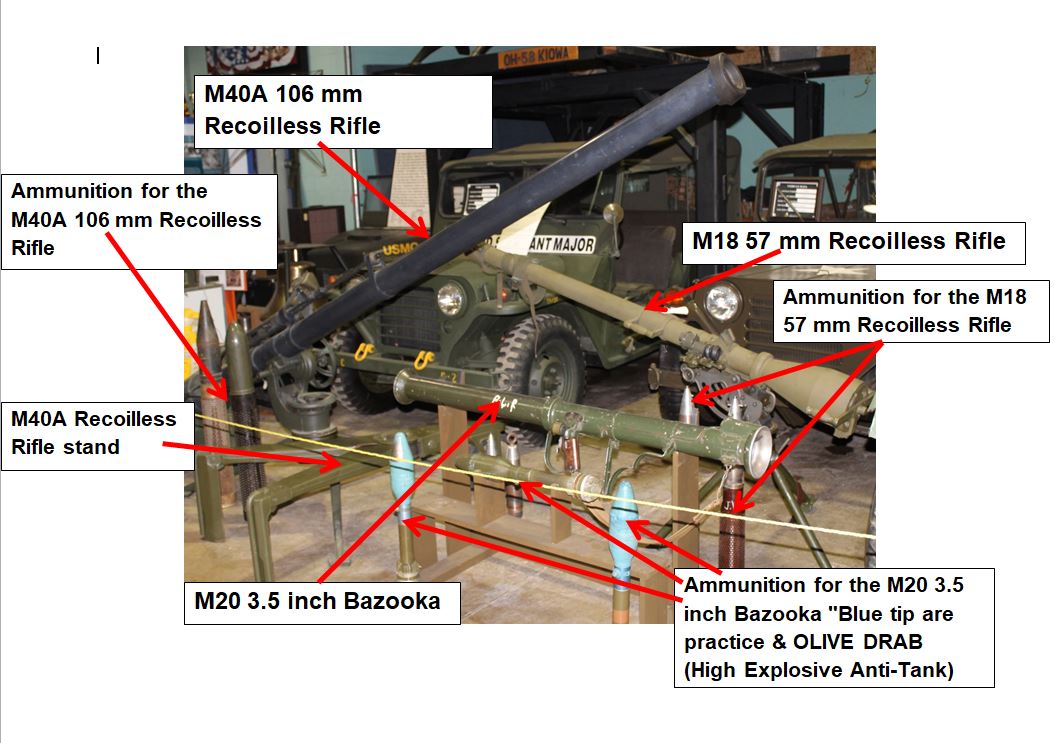Recoilless Rifles
A recoilless rifle is a light-weight artillery system designed to eject a counter-mass from the rear of the weapon when fired which creates a forward thrust that counteracts most of the recoil. This principle of operation allows the weapon to operate with less structural mass for the gun tube and mount than a conventional artillery piece. This allows greater ease of transport and enhanced utility for mobile combat units such as paratroops and special forces. Some recoilless rifles can be carried by an infantryman while larger weapons can be mounted on vehicles such as jeeps or towed. The most common design of the recoilless rifle vents some portion of the propellant gases to the rear of the tube creating a forward thrust which is nearly equal to the rearward thrust of the recoil. Thus, the recoil is nullified. This eliminates the need for a heavy and complex recoil damping mechanism seen on other conventional artillery pieces. The casing of a recoilless rifle shell is often perforated to allow the venting of propellant gases to create the rearward thrust. Some projectile velocity is lost to counteract recoil, so recoilless rifles generally have less range than conventional artillery.
The 106 mm M40A Recoilless Rifle
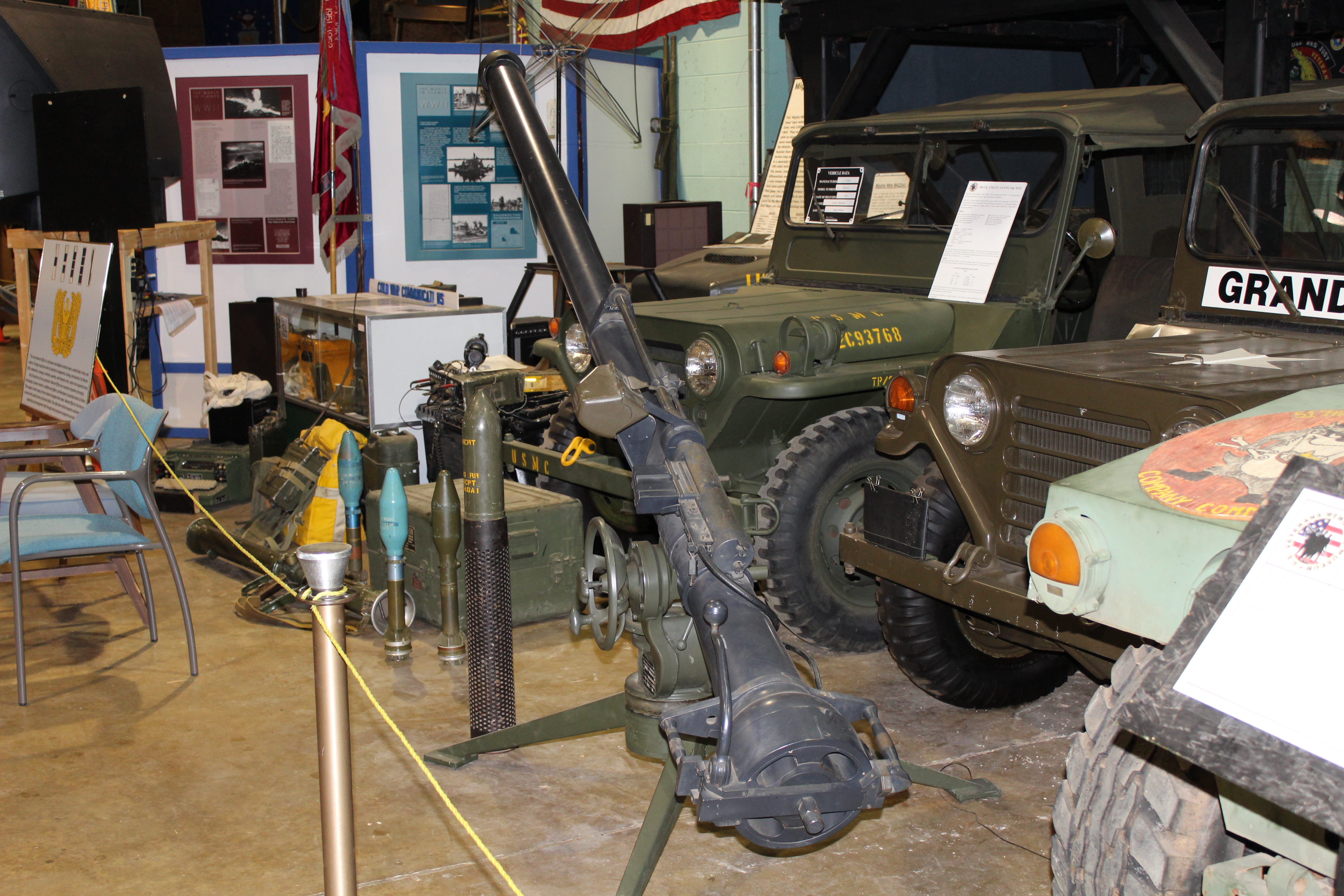
The 106 mm M40A recoilless rifle is a light-weight artillery system designed to eject a counter-mass from the rear of the weapon when fired which creates a forward thrust that counteracts most of the recoil. This principle of operation allows the weapon to operate with less structural mass for the gun tube and mount than a conventional artillery piece. The M40A is an air cooled, breech-loaded single shot rifle. It was designed for direct fire only and was sighted using a .50 cal spotting rifle mounted on the barrel.

106 MM HEP-T Ammunition (on right)
The HEP ammunition is used against armored targets, personnel and light material. The projectile is a thin walled steel cylinder with a short ogive and flat base. A pre-engraved rotating band encircles the projectile just forward of the base. The base is fitted with a detonating fuse with an integral tracer. The projectile body is loaded with 7.72 pounds of Comp A3.
106 MM HEAT Ammunition (on left )
The HEAT ammunition is used against armored targets. The cartridge consists of a perforated plastic lined steel case crimped to a steel projectile containing a shaped charge. The nose cone adapter carries a piezoelectric element to initiate the fuse. A coper cone inside the projectile shapes the charge. The space within the cone and adapter provides an appropriate standoff distance between the target and the shaped charge.
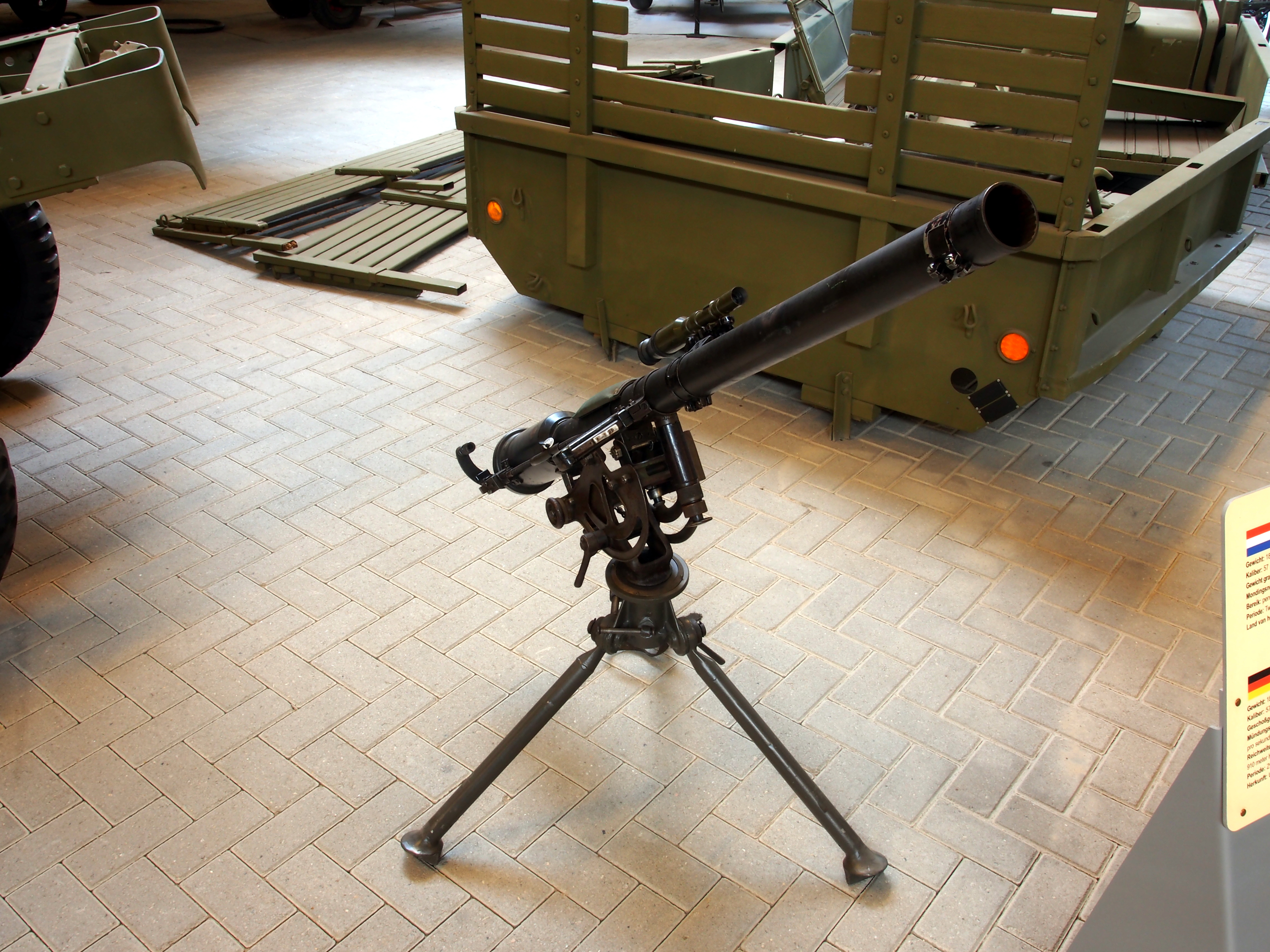
57 mm M18 Recoilless Rifle
The 57 mm rifle is designed to be operated by a two man crew, the gunner and loader. The rifle could be fired from a prone, kneeling or standing position. Ammunition was carried in 40 pound wooden crates. The M18 was first used in the European Theater in 1945 and was soon also sent to the Pacific Theater. The M18 fired four types of ammunition including anti-tank HEAT, HE, White Phosphorous, and practice training rounds. Unlike mortar rounds, the ammunition for the M18 are “fixed” rounds. The propellant charge is not adjustable before firing. In the European Theater, the HEAT ammunition was not as effective as expected when used in its anti-tank role, and had insufficient armor penetration. However, in the Pacific Theater it performed very well against more lightly armored Japanese tanks and static positions and bunkers. During the Korean War, the M18 proved to be ineffective against Soviet T-34 Tanks provide to the North Korean Army. During the Vietnam War, the M18 was deemed obsolete for anti-tank use and was instead used as an anti-personell weapon. The M18 weighs 45 pounds, is breech loaded, and has an effective range of 500 yards.
57 mm M18 HE Ammunition
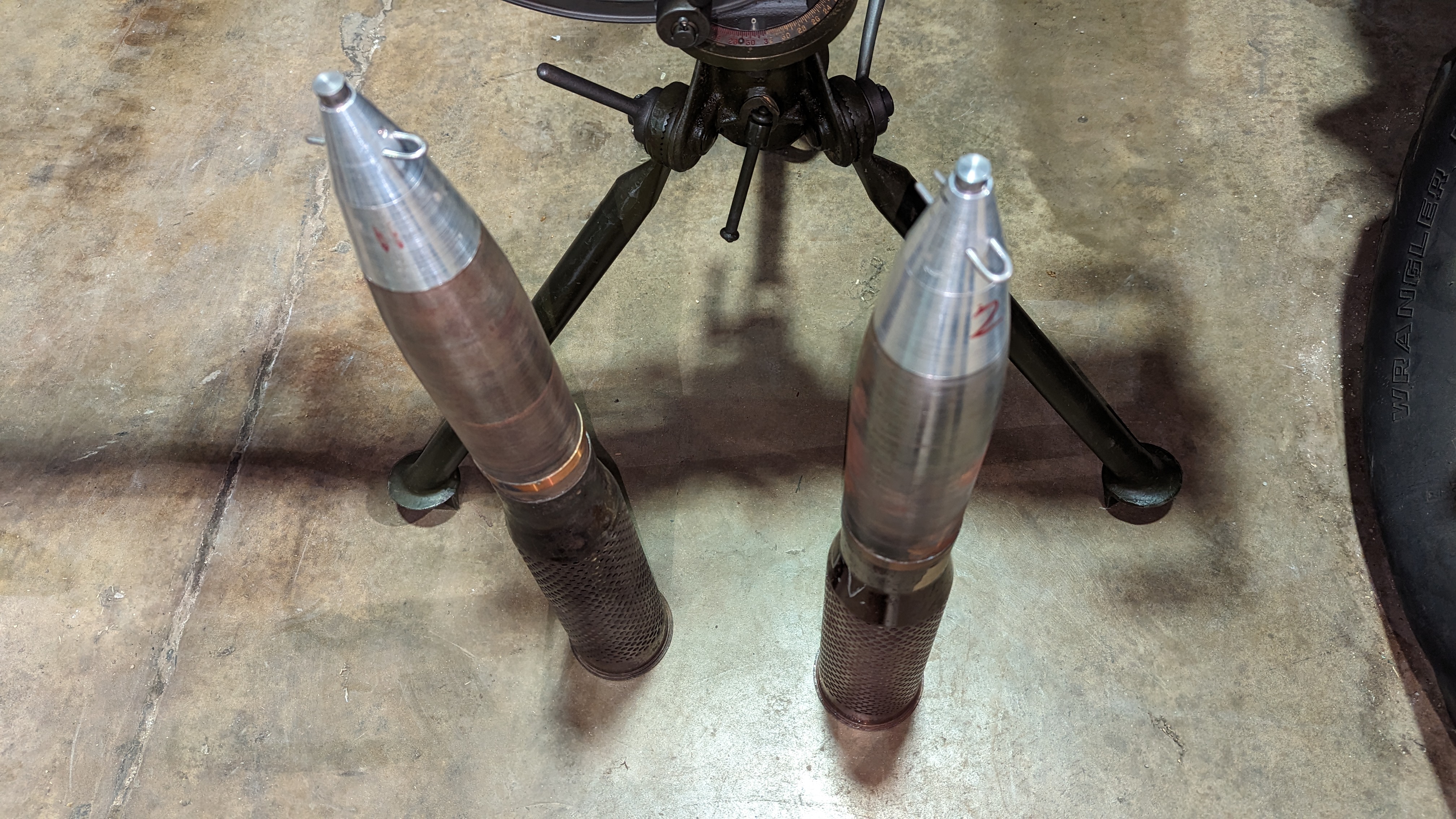
The HE cartridge M306A1 consists of a perforated case containing a plastic liner and percussion primer. The propelling charge is loosely loaded into the liner. The cartridge case is crimped into a high-explosive projectile. The projectile contains an explosive charge of Composition B or TNT. Projectiles are fuzed with point-detonating M503 fuses which function on direct impact. The cartridge is stabilized in flight by fins.
3.5 inch M20 Bazooka

The Super Bazooka was developed toward the end of WWII and was more powerful than the M1 Bazooka. The M20 had a more powerful rocket and shaped charge than the M1. The M 20 was first used during the Korean War and later used during the early years of the Vietnam War. It was replaced by the LAW Rocket. In service, the M20 was very effective as an anti-tank weapon. The M20 fires HEAT, White Phosphorous or practice rockets using solid propellants. The rocket propellant is expended while the rocket is inside the launch tube. The flight path is stabilized by tail fins. Rockets are loaded into the launching tube from the rear. When fired, a dangerous back blast zone is created behind the launch tube. The M20 can be operated as a shoulder fired weapon or can be fired using a bipod.
3.5 Inch M28A2 HEAT Rocket
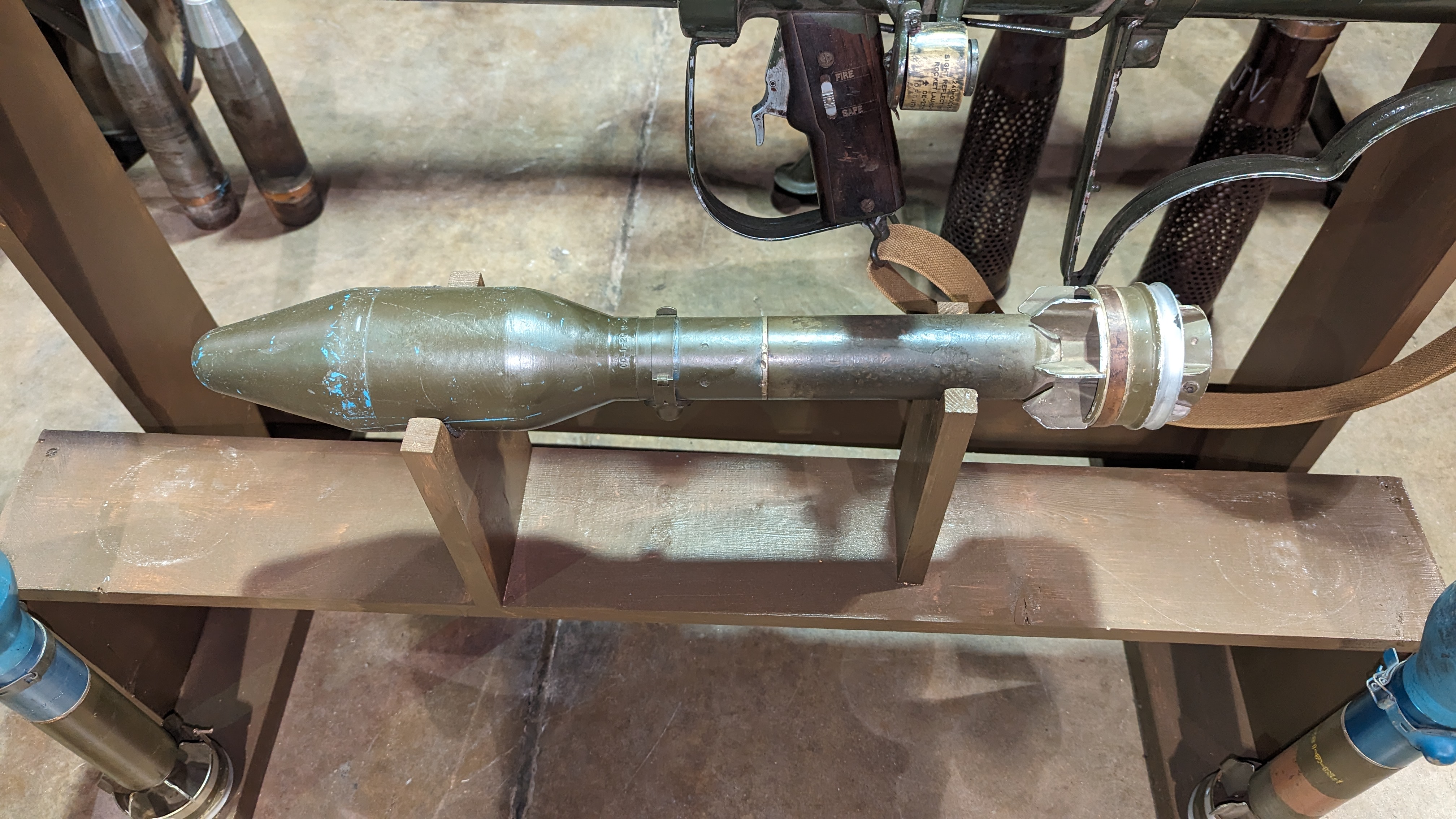
The M28A2 HEAT High Explosive Anti-Tank Rocket is primarily intended to be used against tanks, but is also used against other armored vehicles, gun emplacements, and personnel. The warhead is cylindrical and tapered. The rear end is threaded to accept a fuze. The motor assembly consists of a tube that houses the propellant and igniter. The stabilizing fins are also attached to the tube body.
3.5 Inch M29 Practice Rocket
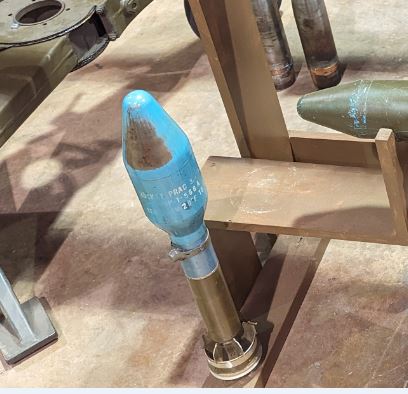
The practice rockets are used for training of handling and firing the 3.5 inch M20 Bazooka. The warhead is completely inert, but the rocket has the same flight characteristics as an armed rocket. The practice rocket can be fired at buttoned up modified target tanks without danger to the crew.



